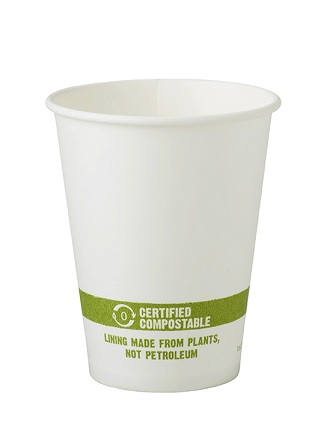As both the United Kingdom and European Union governments look to introduce taxes or bans on single-use plastic packaging products, the question on the lips of many operators in the catering and hospitality sector is: “What is the best alternative?” Should operators introduce consumers to reusable packaging or switch consumers to disposable plastic-free alternatives?

Last week, independent coffee chain Boston Tea Party said it has seen sales fall by $325,000 since it banned single-use cups last summer. Not prepared to apply an all-out ban on disposable products and risk a similar reduction in sales, many foodservice operators are looking at compostable packaging products as an alternative, predominantly made from bagasse (sugar cane fibers) or PLA (poly-lactic acid).
Common rhetoric surrounding compostable packaging products made from PLA is that this material is plastic-free because it is made from plants rather than petrochemicals as with traditional plastics. However, does being made from plants mean that compostable plastic-like materials, such as PLA, are actually not plastics? The answer is no.
PLA and other compostable (and biodegradable) plastic-like materials are still in fact plastic. If these materials are not correctly disposed of at their end of life, they will cause just as much damage to our land and marine environments as traditional petrochemical-based plastic litter.
A winning quality of compostable plastics is that they are produced from renewable resources, and if correctly disposed of in a food waste bin, and sent to an “In Vessel Composting Facility” along with food waste, can be reprocessed into compost. However, if we are to truly move towards a more circular economy, one where materials are used responsibly, then we must not trick ourselves into believing that we can solve the ocean plastic crisis by simply replacing one plastic for another.
To properly understand why compostable and biodegradable plastics are still plastic, we need to understand what plastic actually is. Seven types of plastic can be used to make an astonishingly wide array of products. All of these plastic types are made from hydrogen and carbon molecules, along with other elements. When enough hydrogen and carbon molecules bond together, the repeating chains form a large molecule known as a polymer. All plastics are made from these polymers mixed together with other additives to create different types of plastic with different chemical properties which determine what the plastic can be used for.
However, although all plastics are created from polymers, not all polymers are plastics. This is because polymers are divided into two categories, natural and synthetic. Natural polymers, also called biopolymers, occur naturally within nature and include materials such as silk, wool, amber, rubber, keratin, starch and cellulose.
By contrast, synthetic polymers are man-made through a chemical reaction, to create products such as adhesives, paints, mechanical parts and of course, plastics.
Compostable and many biodegradable plastics are made from naturally occurring polymers such as starch or cellulose, and it is at this point confusion is created and compostable/biodegradable plastics misrepresented as “not plastic.” Although a natural polymer is used, the compostable or biodegradable plastic material is still man-made in a laboratory via a chemical reaction, in the same way as synthetic polymers.
Plastics can be made from just about any naturally occurring polymer but most have historically and continue to be made from petrochemicals due to the cheaper cost of production. An important step in making our use of plastic more sustainable is to produce all plastics from naturally occurring and renewable biopolymers. A great example of this innovation is the Coca Cola plant-based plastic bottle, synthesized from cellulose rather than petroleum.
If industry is to take a leading role in halting and reversing the damage caused by ocean plastic, then we simply cannot substitute one plastic for another. Both compostable and recyclable plastics have a place in the circular economy, but they must be understood as plastics, with the method for ensuring that each plastic is either composted or recycled clearly communicated to the end user.
Joanna Gilroy is head of sustainability at Bunzl.
Source: https://www.greenbiz.com/article/are-compostable-plastics-actually-plastic
